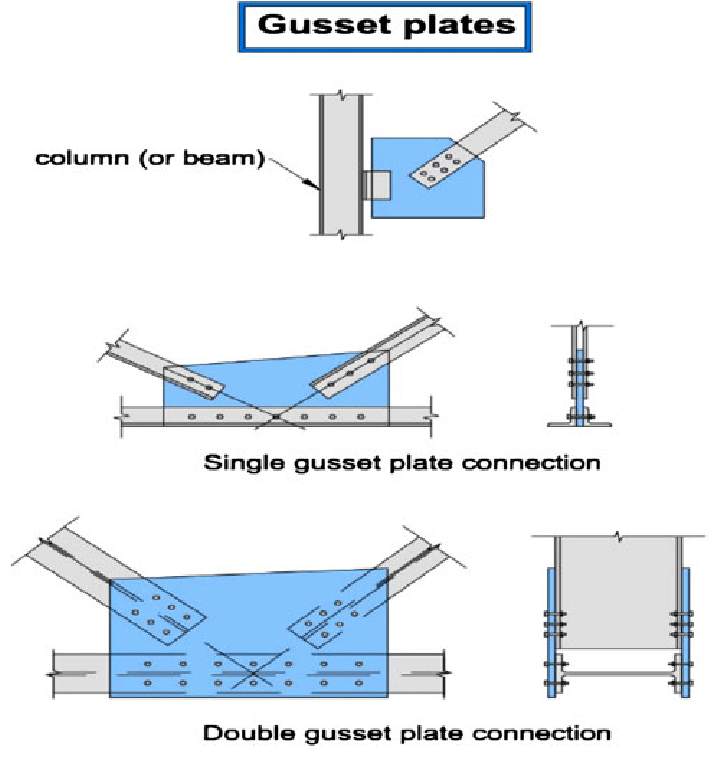Table of Contents
A gusset plate may be defined as a plate for attaching beams and girders to columns. Gusset plates can be connected to a permanent member either by bolts, rivets, welding, or use of the three. They are utilized in bridges and buildings, as well as other structures.
There are different types of gusset plate connections, double gusset plate, dual gusset plate, gusset plate with double-sided splice member, and gusset plate with single-sided splice member.
There are various steel gusset plate types are of triangular base shape with a various number of drilled holes for bolting to bridge and beam supports. Many times, both, bolting and welding are required for bridge construction plates. A few years ago, riveting was a commonly used method for connecting these types of plates.

The special designs for high load-bearing gusset plates are rectangular in shape and welded into the corners, fitting below one I-Beam while providing support to the next beam near to it.
Many of you might refer to these as “stiffeners” rather than gussets. The bridges and truss Columns are civil engineering construction projects that need various gussets and supports.
2. Materials
Gusset plates are normally either prepared from cold-rolled or galvanized steel, depending upon their utilization. Galvanized steel provides protection from rust, so this is generally utilized when the gusset plate is opened to the elements.
The gusset plate is generally painted to protect it from rust by adding an extra layer of paint and to make it similar to nearby steel and fixtures.
Gusset plates are prepared from copper or aluminum, but only with fewer structures that do not need huge support.
The copper and aluminum gusset plates also made for a more attractive finish for exposed structures.
3. Design Reconsideration
It can be prepared in different shapes and sizes and from a reach of materials.
Gusset plates are normally square or rectangular in shape but can be triangular or prepared shape to connect the joint. The shape of each plate is prepared so that welding or bolts can be used on various ends of the plate.
A gusset plate can form the whole connection or it can be used in conjunction with bolts or welds.
There are various important connection types that contain gusset plates, which contain KT gusset plates, uniform force bracing connections, and bolt groups.
A KT gusset plate attaches various members together through the help of one gusset plate. The gusset plate is welded to a beam, and then two or three columns, beams, or truss chords are attached to the other side of the gusset plate through bolts or welds.
A regular force bracing connection attaches a beam, column, and one other member. The gusset plate is bolted to the column and welded to the beam. The attachments of the last left member can be through either bolts or welds.
| Read More: Timbering of Trenches |

4. Uses of Gusset Plates
The uses of gusset plates are as follows:
✔ Gusset plates are commonly utilized to attach beams and columns together or to attach truss members.
✔ Gusset plates are utilized in major metal weight-bearing structures like bridges.
✔ Gusset plates give an easy way to support structures that can no longer safely bear the applied loads.
| Read More: Anti Termites Solution |

